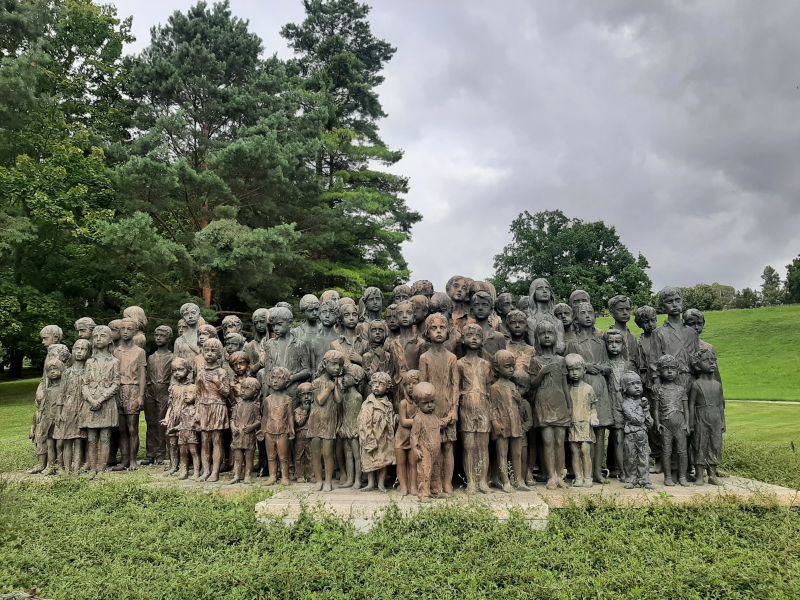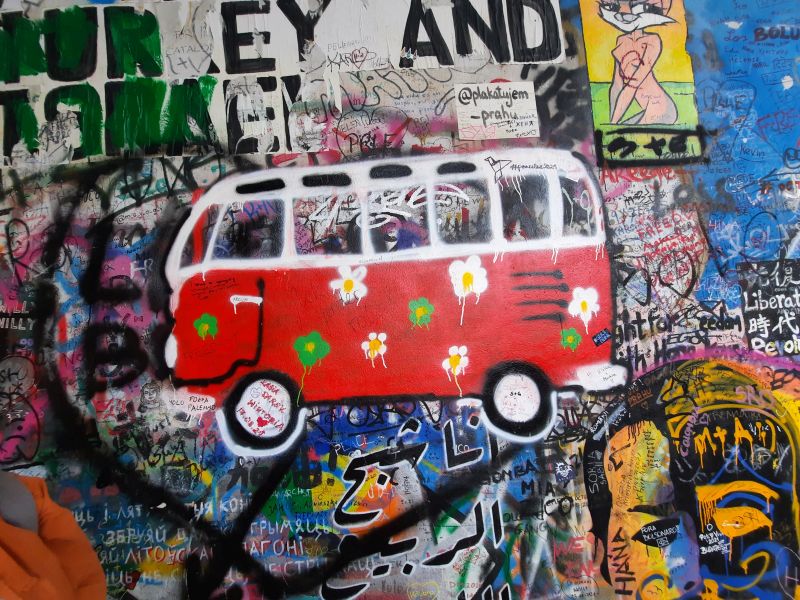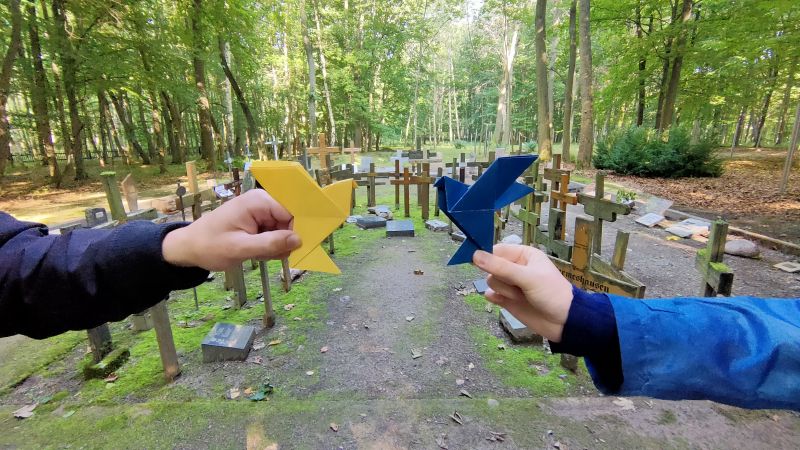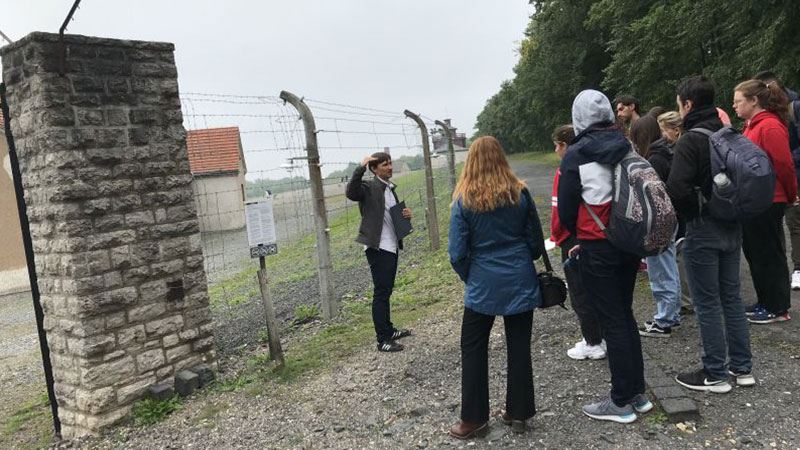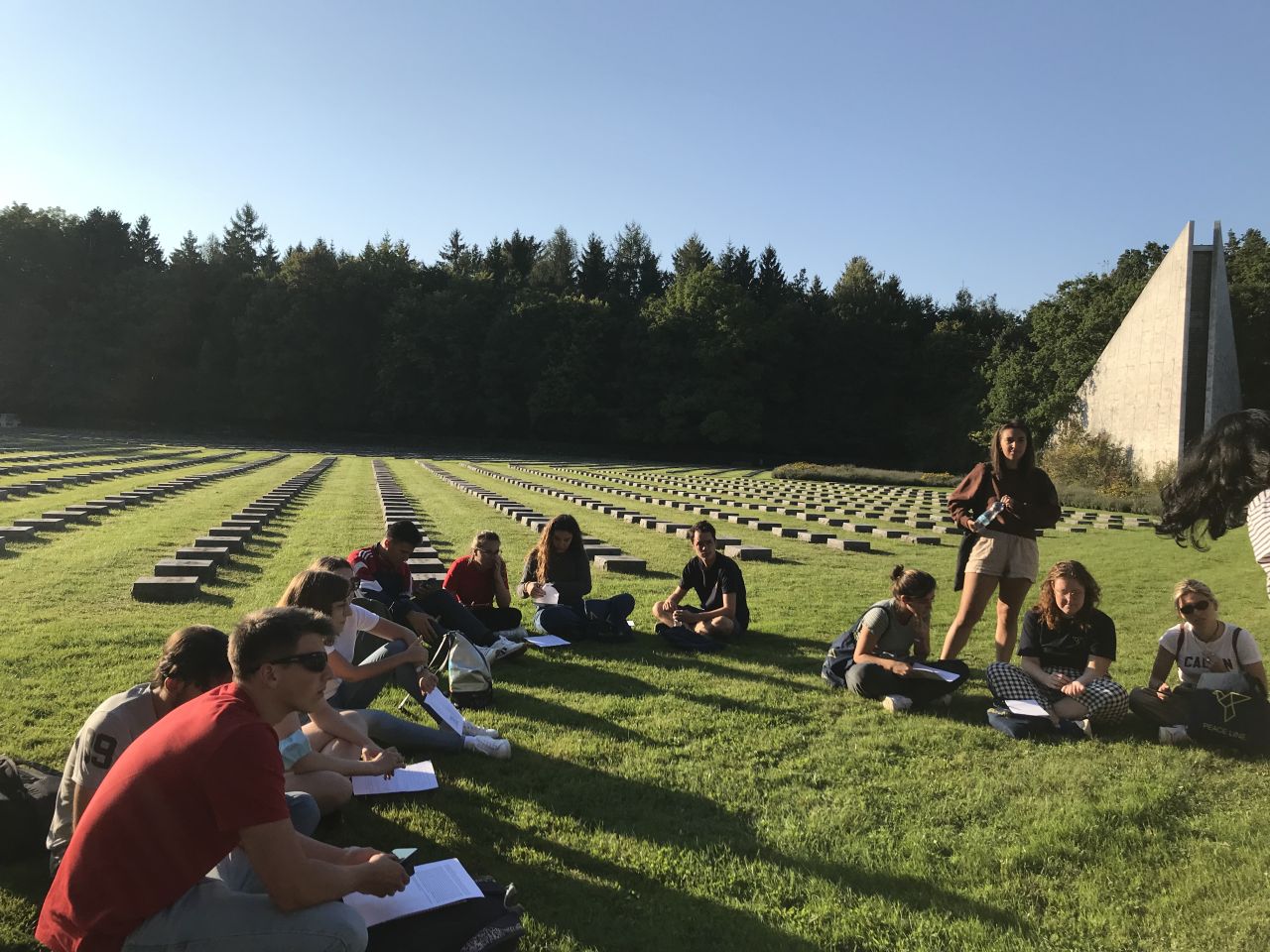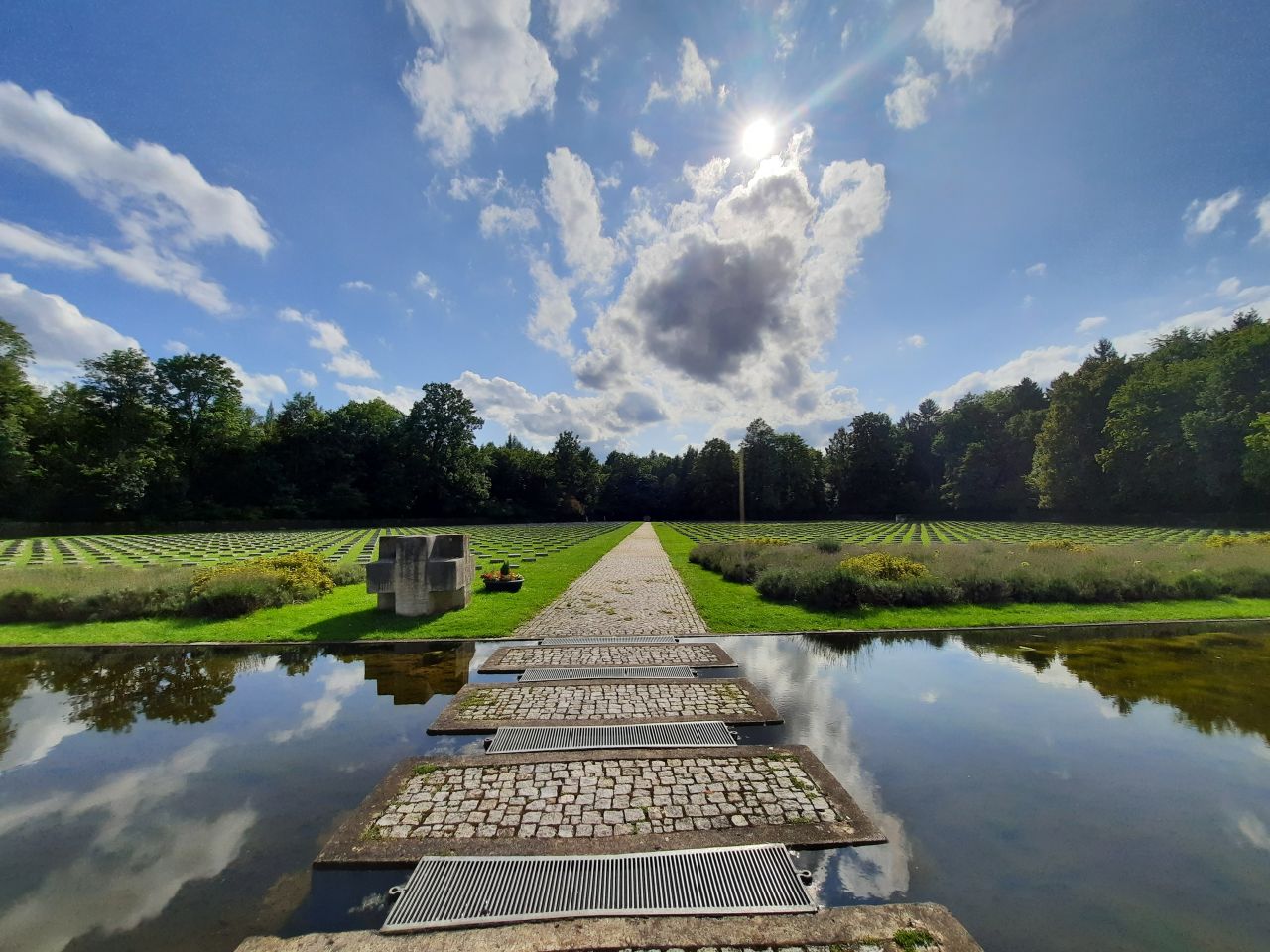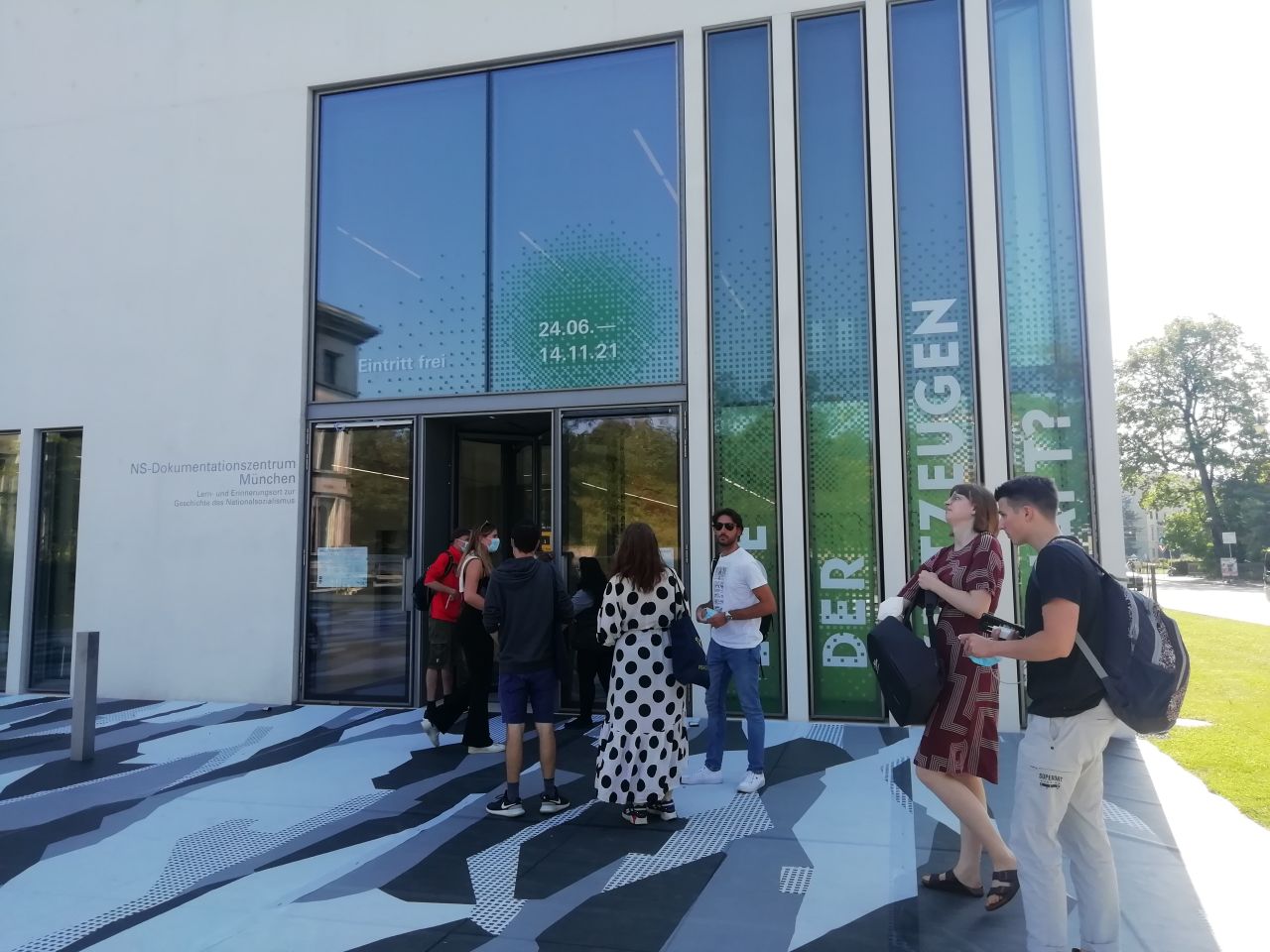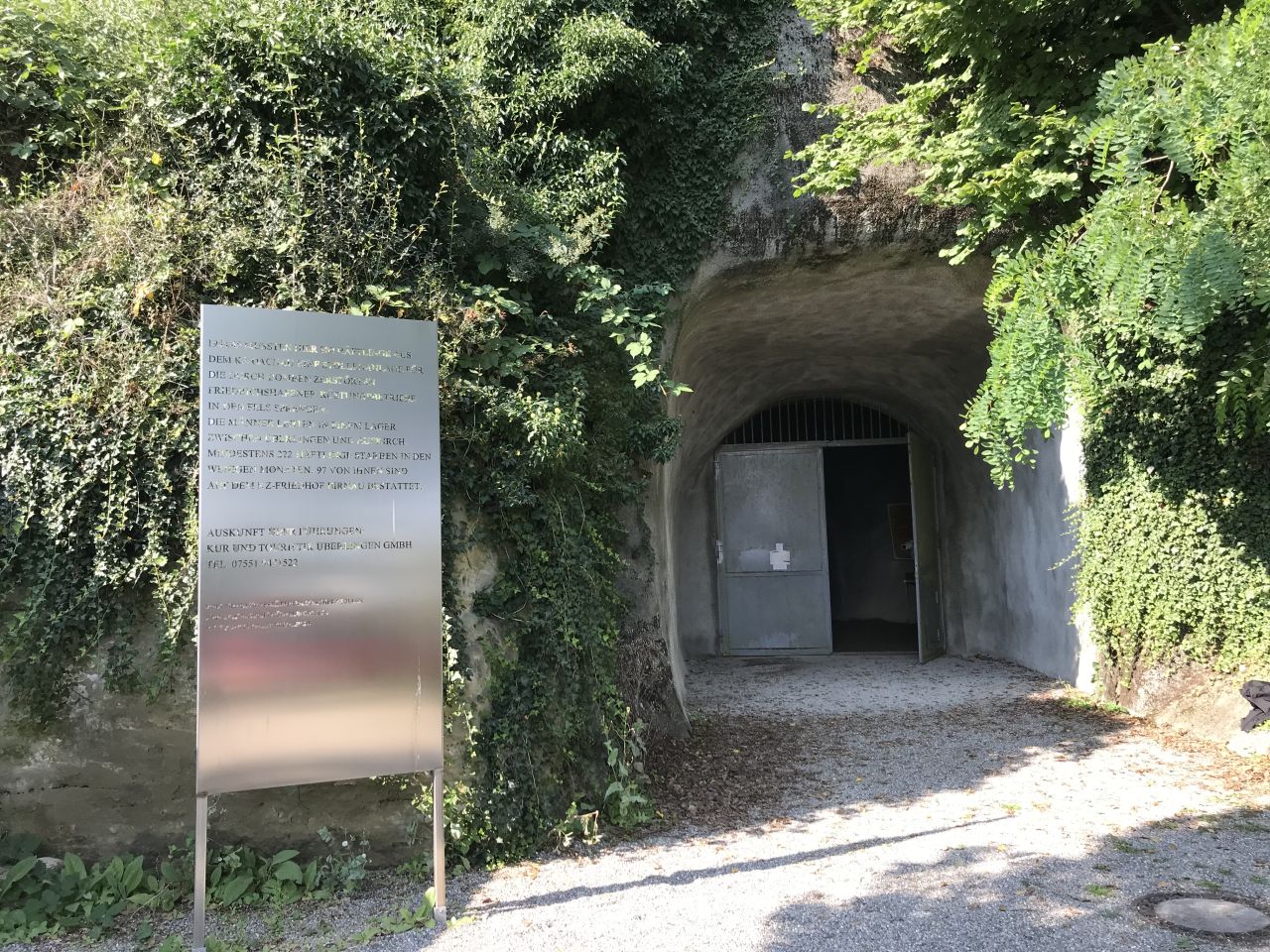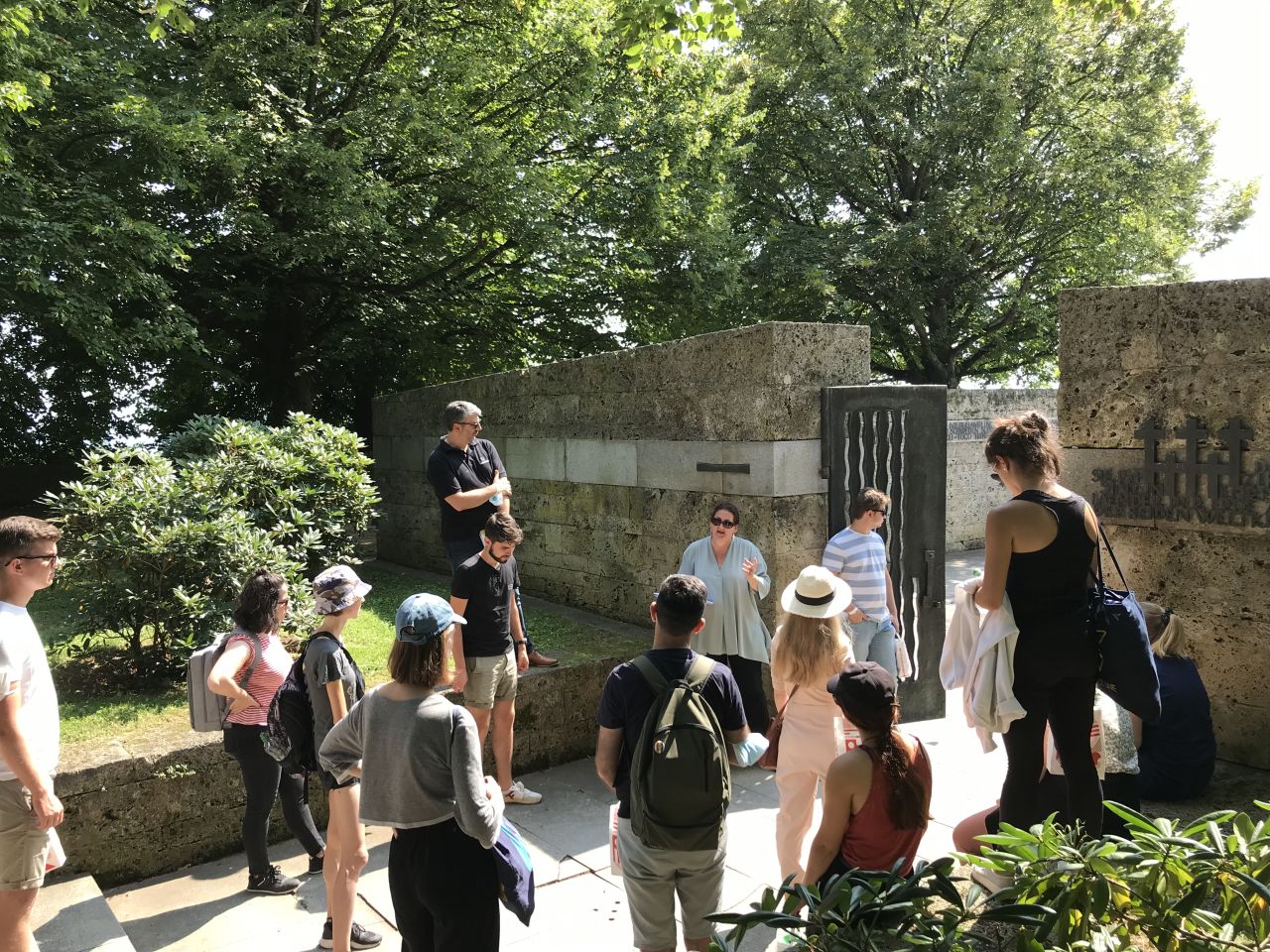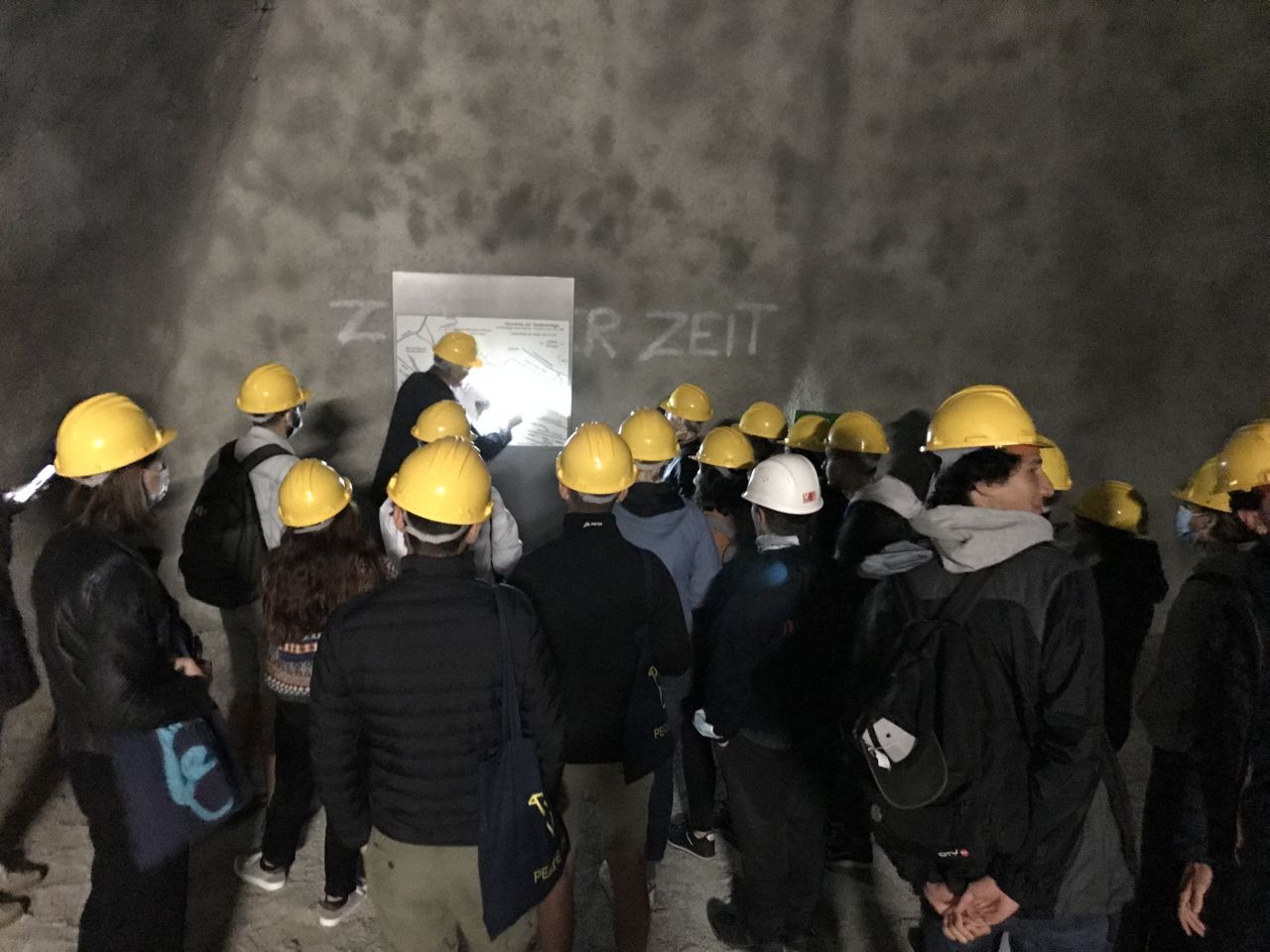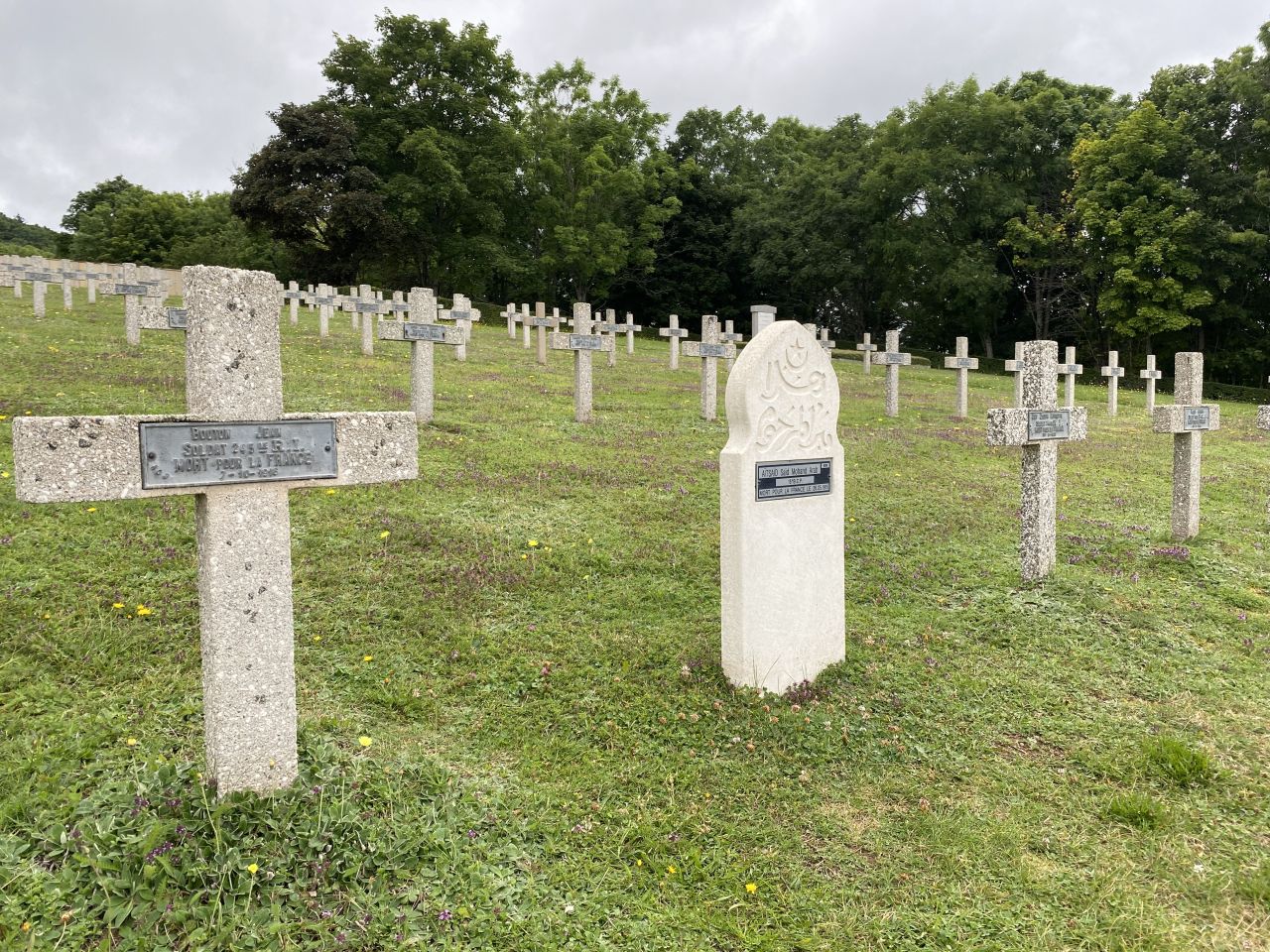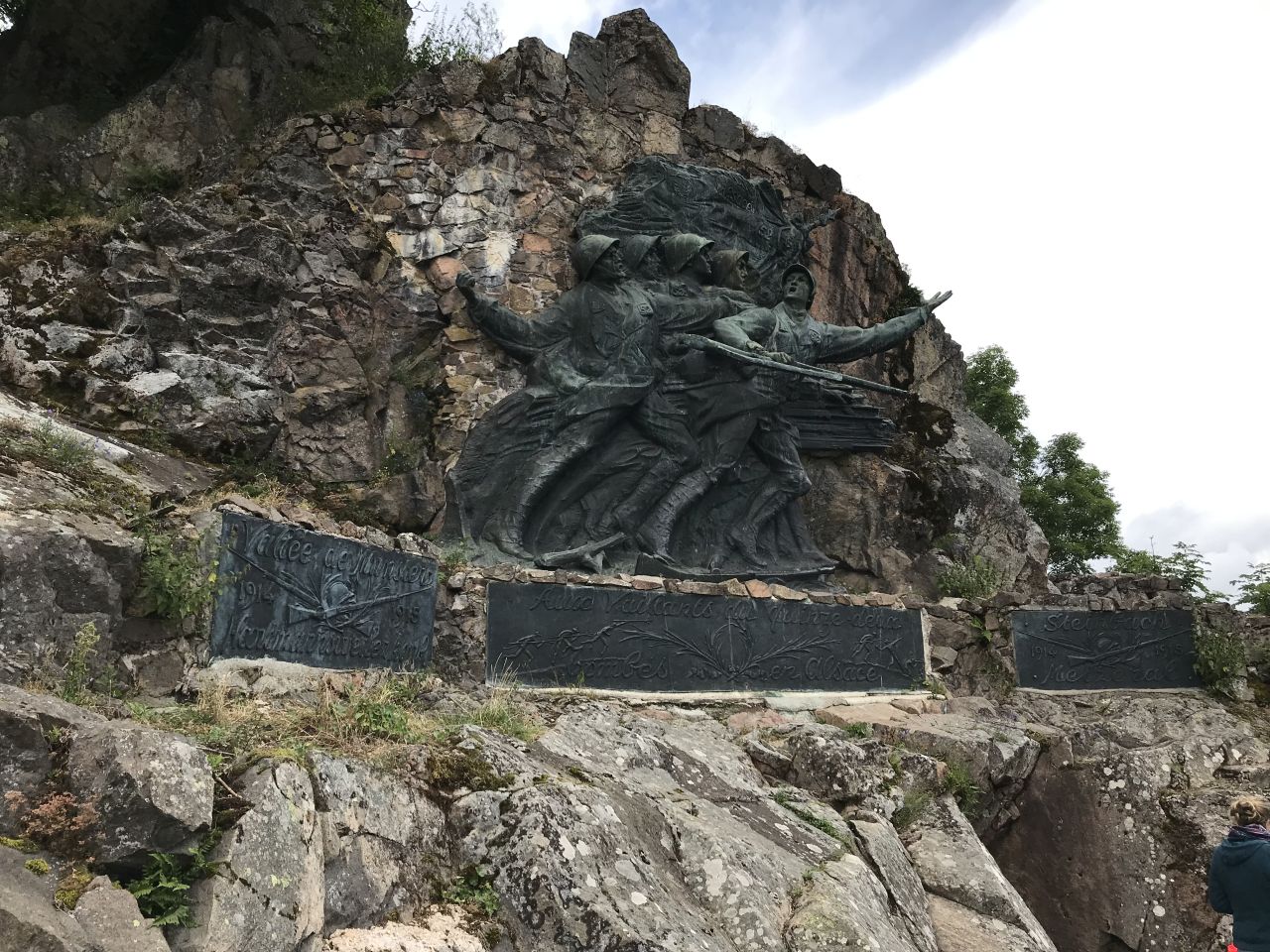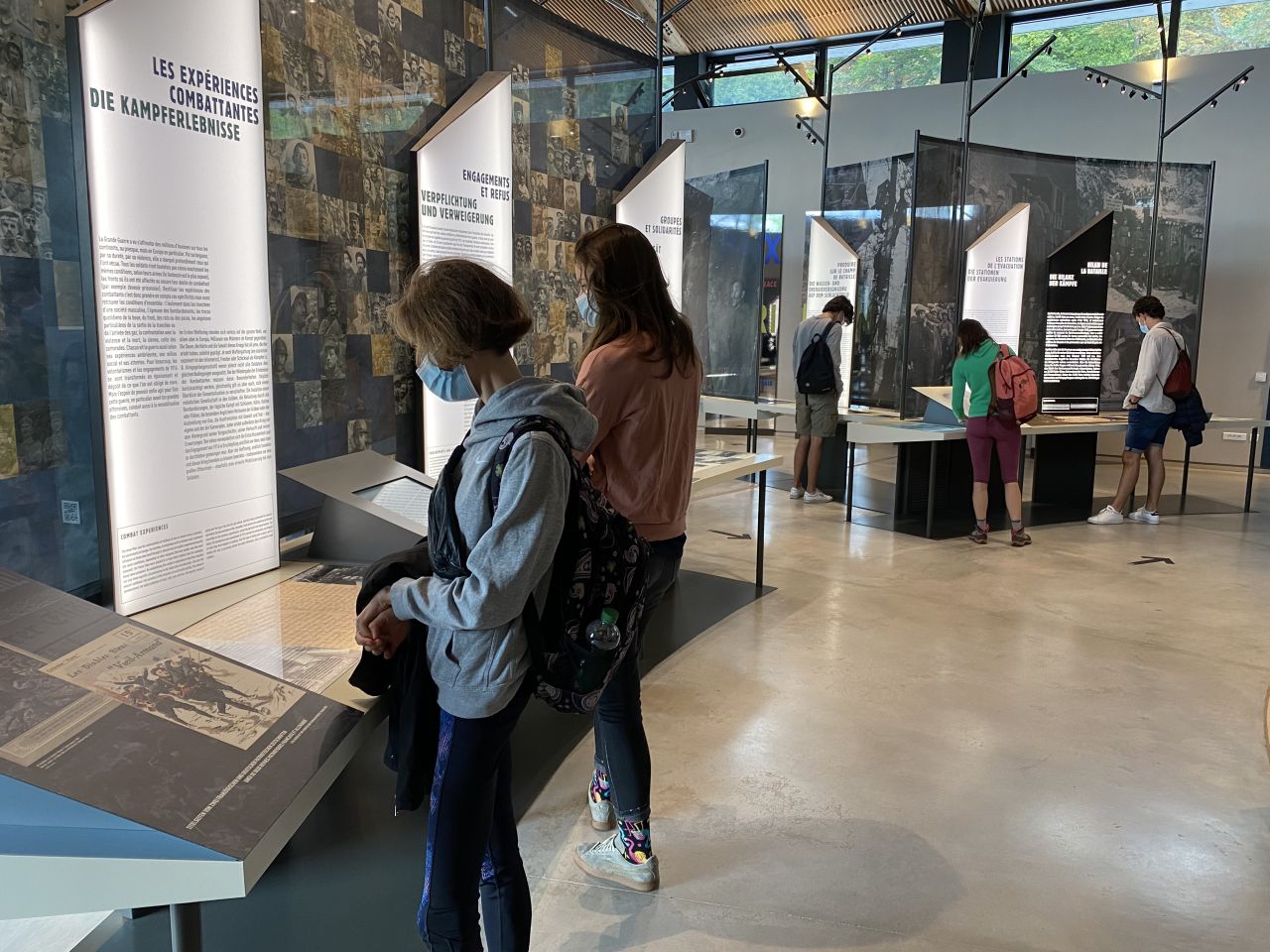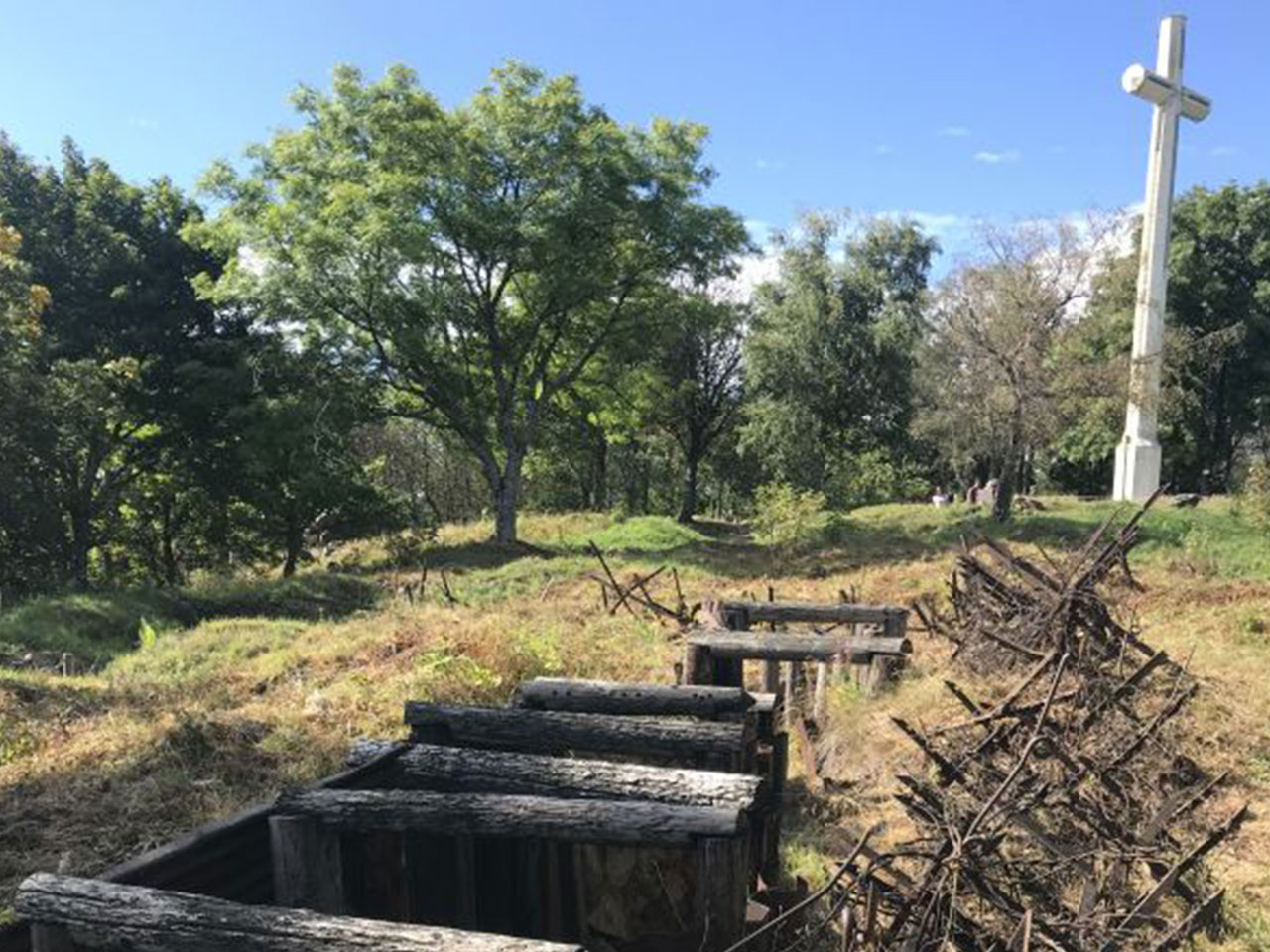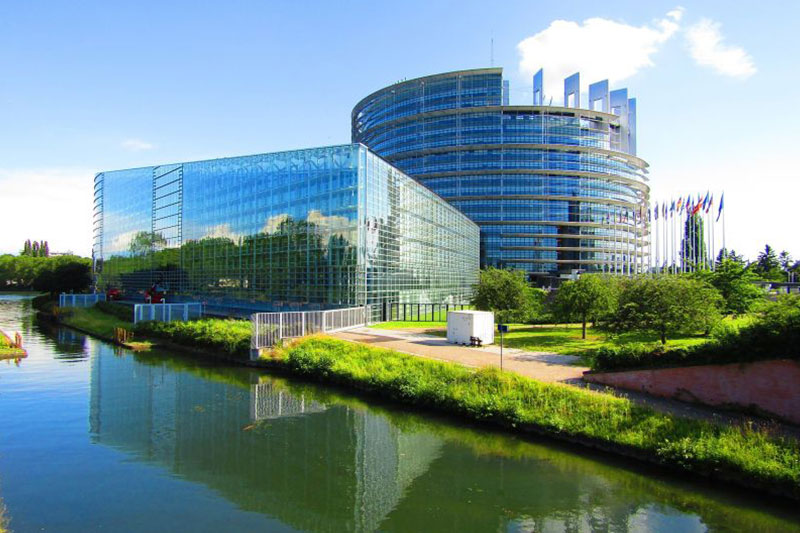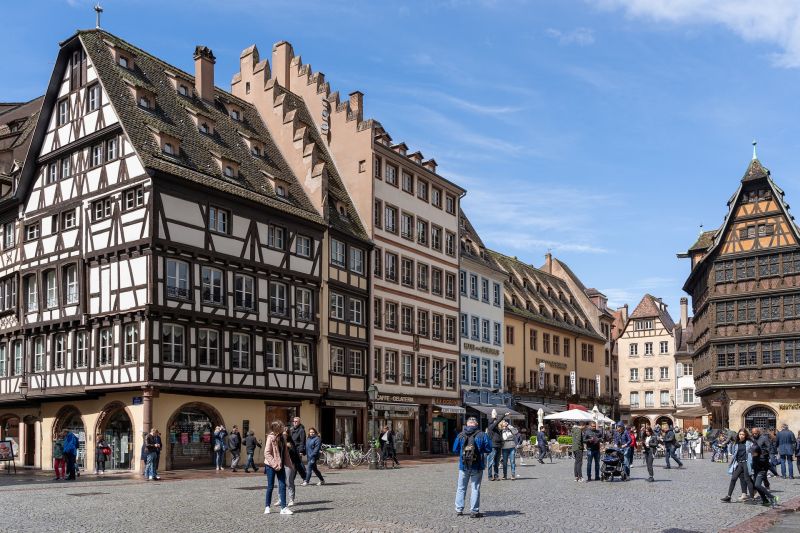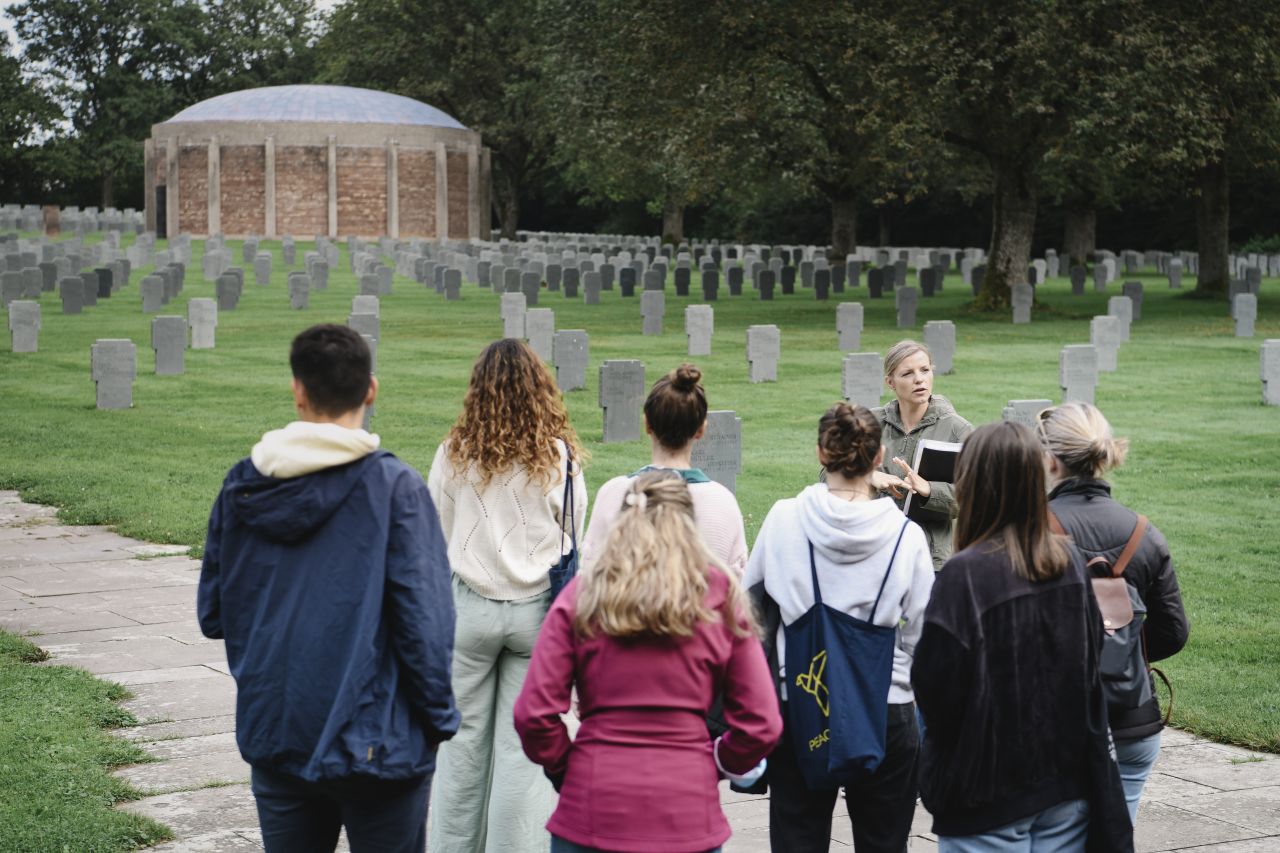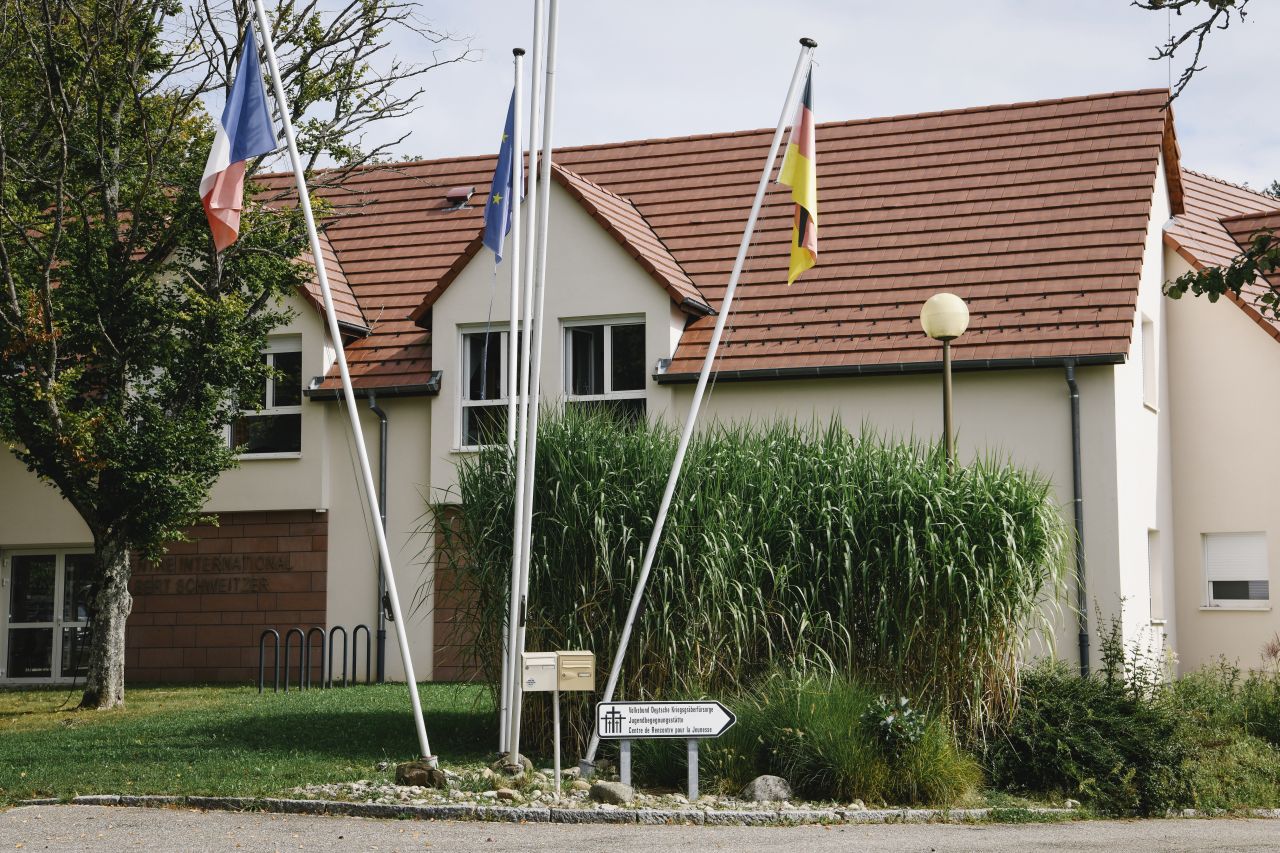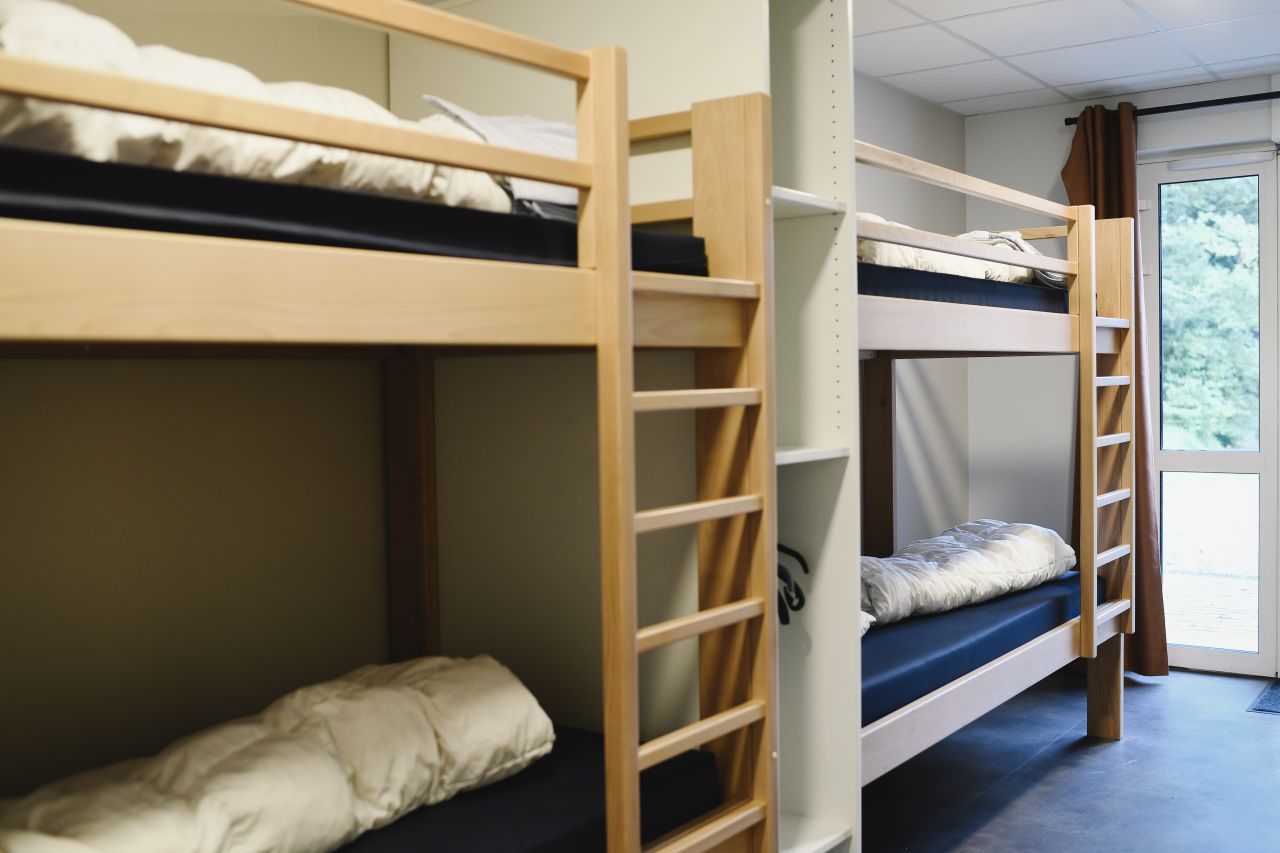Green Route
To discover various aspects of the history of the 20th century, apply for the Green Route. You’ll discuss the background and consequences of the two World Wars, the Cold War and its division of the world as well as the European Unification and its goal to prevent future wars. This route will take you through the frontlines of former conflicts in Central Europe, like the trenches of World War I in Hartmannswillerkopf.
Creator: peaceline.eu
PRAGUE
A preparatory workshop in the capital of the Czech Republic marks the beginning of the Green Route. In Lidice near Prague, you will learn about the massacre that took place there. The village was completely destroyed in 1942 by the National Socialists in revenge for the murder of Reinhard Heydrich who was one of the key figures responsible for the Shoah. He was fatally injured by Czech resistance fighters during an assassination. As well as finding out more about the horrific events that occurred under the National Socialist regime, you will also explore the changing history of Prague itself. There’ll also be free time to enjoy this beautiful city.
WEIMAR
The route then continues to the small German town of Weimar. Here, a visit to the Buchenwald Memorial awaits you where you will learn about the dual history of the camp and discuss your insights. Buchenwald was built by the Nazis as a concentration camp and continued to be used by the Soviet Union as a special camp after World War II. Afterwards, you’ll visit the House of the Weimar Republic that educates about the history of the first parliamentary democracy of Germany that existed until Hitler came to power.
Creator: peaceline.eu
Creator: peaceline.eu
MUNICH
Leaving Weimar behind you, you’ll continue to Munich. You’ll ask yourselves where National Socialism and its ideology originated. What events led to social exclusion, war and destruction? You’ll find answers in the Documentation Centre for the history of National Socialism. It’s not possible to return the victims of the war to life, but we can give them back their biography. In the Waldfriedhof, or forest cemetery, you’ll be shown war graves – not simply of dead soldiers, but of people who had lives of their own, and who had plans and hopes for the future. You’ll have the opportunity to take a closer look at their individual stories.
LAKE CONSTANCE
On the shore of Lake Constance, the focus will be on World War I which led to the deaths of 17 million people. Near Meersburg, you’ll visit a Germanic-heathen war memorial, which is highly characteristic of the memorials to dead soldiers that were built after World War I. They were an expression of a hero cult but were not designed to encourage historical reflection. The next stop on your route will be in Überlingen to visit the Documentation Site Goldbach Tunnel. Wearing a helmet as protective equipment, you’ll explore the tunnel and learn about the forced labourers used by the National Socialists who had to build it.
Creator: peaceline.eu
Creator: peaceline.eu
HARTMANNSWILLERKOPF
The monument on the Hartmannswillerkopf hill in France clearly expresses the senselessness of the battles and trench warfare that took place here in World War I. The hill is also known as “man-eater mountain”, since around 30,000 French and German soldiers were killed here during World War I in static battles all around the hill. In 2017, the German Federal President Frank-Walter Steinmeier and the French State President Emmanuel Macron inaugurated a German-French museum dedicated to the battles and commemorating the men who died there. Particularly impressive are the still very well preserved German trenches, which can be explored on a hike if the weather allows it.
STRASBOURG
The largest city in the French region of Alsace is home to the European Parliament and the Council of Europe. As one of the centres of the European Union, Strasbourg stands for European Unification. As a consequence of two world wars, the conflicts of the member states are settled without military conflict. Here, you will get to know the players of European politics and discuss with them.
Creator: Stella von Saldern
NIEDERBRONN-LES-BAINS
You’ll complete your journey with a concluding workshop at the International Youth Meeting and Education Centre in Niederbronn-les-Bains in the Alsace region of France. There, you’ll have plenty of time to reflect on everything you’ve experienced and to talk about it in the group.
The Green Route
The Green Route takes you through an eventful century of European history. Those who are familiar with the past can shape the future. You will learn about different national views on history and will have the exciting opportunity to meet young people from many different countries.
For 14 days, you will travel this route together with about 30 young people from all over Europe. Most of the journey will be done by a tour bus.
If you want to take part in the adventure, join us on the Green Route that takes you through Central and Western Europe!

